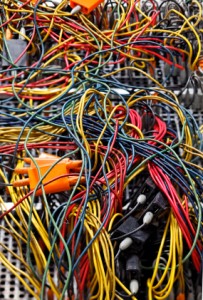Someone tweets an interesting piece of news or offer from their website. Intrigued, I feverishly click on the link to find out more. BLAM! The door is slammed in my face by the need to enrol, buy a subscription, and generally take time out from my day to jump a few hurdles before I can get to the news I was after.
The result? Generally, I give up. Don’t you?
I’m not knocking the need for magazines to make money from their online news content, or other sites to garner much valued marketing information, but there must be a third way.
The chicken chase
If you were going to lure a chicken into a chicken coop for example (stay with me here), you wouldn’t chase her all round the garden and then, just as your harassed Henrietta looked poised to go into her coop, close the hatch and ask her to fill out a form. Of course not, that would be madness. You’d probably throw her some corn to show her the way, give her some more corn maybe when she’s safely in the coop and then close the door gently behind her (mind those tail feathers).
The point is, like chickens, we’re easily distracted; so don’t send out those Tweets linking to that website which are rewarded with, well, nothing. Feed us a little more, make it easier, and the rewards will surely come.

